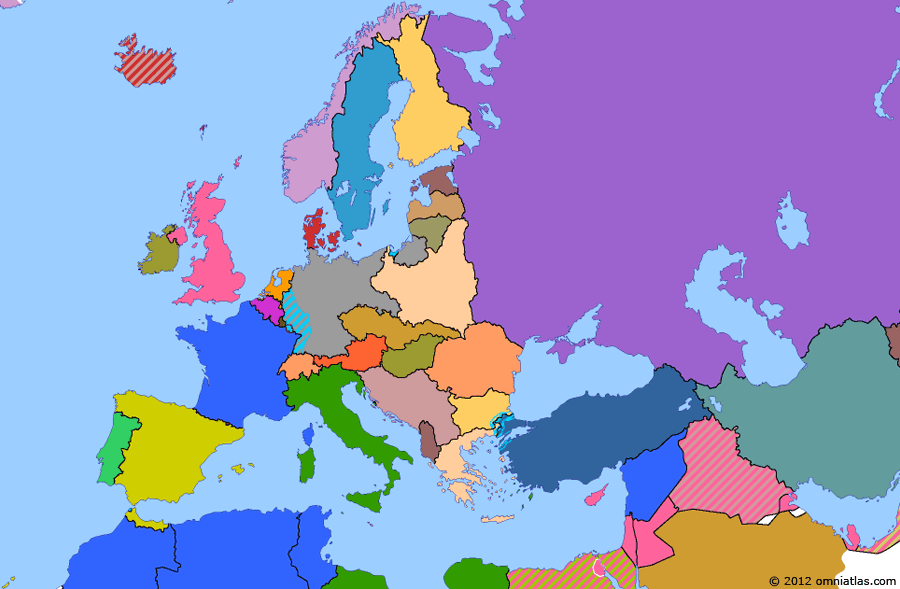How to Rebuild the Calgary Flames – A Four-Year (and a bit) Plan
By RexLibris
11 years agoI’ve given it to Feaster and the Flames a fair bit, most recently in my rebuilding series. So I figure it is probably time to put some skin in the game and say what I would do to rebuild the Flames. No tricks, no hidden agendas. I feel it is time that I add something constructive to this conversation.
I’m going to rebuild the Calgary Flames.
This is the first in a series that will run in seven parts where I play GM for the span of four years with a mandate to overhaul this organization. That’s me in the photo above proudly flying the colours of my new team!
Ground Rules
I’ll be operating under a few general rules: no bad-faith moves to make my bitter rivals a laughingstock, a four-year plan to improve the team for the long term, a clear and coherent explanation of my moves, free rein from ownership to do as I see fit with regards to player management and movement, and no deus ex machina plot devices where I magically sign John Tavares as a free agent in year four.
In many of my moves I will try to include some flexibility as I realize GMs rarely accomplish everything they set out to do.
To facilitate this exercise I am going to anticipate some general terms of the new CBA: Hockey-related revenue is split with roughly 52% going to the players, the salary cap will remain at $70 million for the first year with it being tied to league revenues every year thereafter to a maximum reduction of $3 million per year, there will be no roll-back of salaries nor will there be a contract amnesty as the cap will remain in place and teams will be given ample time to get under it. Contract terms will be limited to a seven-year maximum with entry-level contracts and RFA status remaining unchanged from the previous CBA. I’m also assuming a shortened season – in the range of the 48-game schedule the NHL had in 1994 – for the 2012-2013 season. This would be followed by the standard 82 game season in following years in a four division – two conference league.
I am going to avoid trying to anticipate or estimate the rates of inflation in player salaries, therefore I am listing all of the figures here relative to 2012 numbers – in other words, a player in 2015, of similar calibre to Jiri Hudler in 2012, will be signed to a similar amount no matter the year.
I’m sure I don’t need to say this, but as a matter of course, I will try to be thorough in my outline. I’ve been pretty extensive in my criticism of the organization so it seems only fair that I open up all avenues for criticism of my own hypothetical plan. It’s all on the table, so read it and then fire away. With all the CBA negotiation talk a little hypothetical hockey debate might be good for us all.
I’m going to break down each area of the organization and my corresponding moves in every one: management, scouting, advanced analysis, coaching, roster player movement, affiliation and prospects. For the sake of brevity (insert laugh track here) I am going to skip over the details of the AHL team and instead say that prospects will be routed to the Abbotsford Heat when eligible to play for a minimum of one year, and more often two or three until they are fully prepared to move to the NHL and find success. Many prospects will spend their entire entry-level contracts in the farm system. The AHL roster will be staffed with a mixture of veteran players to support and mentor the drafted prospects. Troy Ward will be given a mandate to coach and educate his roster on the details of the professional game and the autonomy to dispense ice time as he sees fit.
New Philosophy
To begin it all though, I am going to outline a new philosophy for the organization, both in terms of team and hockey operations. The team must be a skilled, puck-possession team that emphasizes skill, intelligence (more on that further on), work ethic, and a commitment to continuing improvement. The organization needs to reflect this in the goals of the business. Value must be placed on the health and viability of the on-ice product because the market already exists for a hockey team. The customer/fan has already agreed to a kind of covenant with the franchise and will support it, provided that the relationship reflects reciprocity and mutual respect. Public communication in good faith and with sincerity must be placed at a premium.
The organization needs to grow internally, and continually. No more stagnancy on the roster or attempts to remedy roster shortcomings by signing free agents to overpriced contracts. Accountability, responsibility, collective enthusiasm and dynamic play need to become the foundational pillars of the team.

Where Do We Begin?
I’ll start with a small digression. The best path, in my opinion and others with whom I have discussed this project, is to actively and deliberately tear this team apart at the seams. Blow it up, is the term used most often.

My approach is going to be somewhat different because if I, an Oilers fan, were to lay out a strategy that even flirts with the idea of drafting 1st overall I know I will immediately be accused of partisan bias and any credibility (slim as it is) in this exercise will be lost. So in spite of being an advocate for the Flames to burn it to the ground (pun intended), I am putting forth a slightly different strategy. There are far quicker and more creative ways of rebuilding this roster. Trading players like Cammalleri, Tanguay, and Giordano would be advisable. However, I have set myself a different challenge. We’ll see if it sounds plausible.
Therefore, as Bugs Bunny would say, on with the show…
My first moves would be in management, laying the groundwork by assembling a collection of hockey minds as the Flames braintrust. This would require moving Michael Holditch, current Assistant GM and Senior Vice President of Hockey Operations, over to a position more focused on the financial side of the business. I would approach first Mike Johnston of the Portland Winterhawks and offer him the position of Assistant GM and Consulting Director of Hockey Operations. Failing that, I would ask for permission to speak to his assistant GM, Travis Green for the same position, albeit perhaps in a slightly reduced role relative to his experience.
Craig Conroy and Martin Gelinas would both be assigned to oversee player development, sharing their duties geographically to reduce travel. They would act as liaisons between the drafted players and the organization, helping the prospects to acclimatize, mentor them through their development process, provide feedback on their gameplay in coordination with their local coaching staff, and relay messages on training and nutritional regimens in order to maximize their potential. Currently, as far as I can tell, the Flames do not have anyone specifically assigned to this task, though Conroy and Gelinas apparently have been using this time to scout and communicate with some of their prospects.

Scout’s Honour
With regards to scouting I would fire Tod Button. Obviously, I am less than impressed by his draft record, regardless of the debated interference from Darryl Sutter during the latter’s tenure as GM. The Flames, under Button, have a mediocre (at best) drafting record, and it is a long record to review.
There were draft issues prior to Sutter becoming GM, when Button was still the head scout. These past few drafts have shown an apparent improvement, but this area is going to be absolutely crucial to the health of the franchise. Button has had a long time to display his abilities and they have generally been found to be around average if you’re charitable.
There is ample room for improvement. The draft is going to become a cornerstone of the process as we move forward and rather than allow for any mistakes in the first, and most important, year, I am making the change immediately.
To replace Button, there are a number of names that would be of interest. Bob Green or Randy Hansch, GM and Assistant GM, respectively, of the Oil Kings would be of interest. Trevor Timmins or perhaps even Frank Jay from the Montreal Canadiens are also strong candidates and have NHL experience. Timmins would likely require a significant promotion in title and responsibilities in order to get out of his contract with Montreal. Timmins has overseen a relatively productive scouting group in Montreal for many years and, were it not for years of poor asset management, I believe that organization would be in a far better situation today.
I would also attempt to develop some European liaisons with regards to scouting. In the last three years the Flames have selected only one player from a European league, Markus Granlund. At this time there are only two amateur scouts in Europe, Anders Steen and Ari Haanpaa. It is an underexploited hockey resource for the organization at this time and while scouting resources are often scarce, this region cannot be neglected.

The pro scouting department would also fall under some scrutiny, but for the time being I have no reason to make any significant changes in this area. I would look to add another body or two to the team, which currently consists only of Steve Leach and Michel Goulet. Adding more manpower would increase the number of eyes and opinions on each potential trade candidate. This isn’t an area of pressing need for me, but it does need to be addressed by the end of the four-year plan.
I would make these changes immediately and instruct the new scouting staff to begin collecting data at once, to take advantage of the current NHL work-stoppage, and scour every junior league they can find. Scouting often includes prospects who are a year or more away from draft eligibility, I would encourage and extend this to try and garner a more complete perspective of certain players who become of interest early on in their careers, so that they can be tracked accordingly. The goal of this process would be to incorporate a more encompassing succession plan for various player positions throughout the organization.
I’ve determined the Flames draft-success rate since 2001 is approximately 14% for players who have managed 100+ NHL games, 11% at 200+ games. My goal for my tenure will be to increase that success rate to approximately 20% on average based on anywhere from 7 to 10 selections per year. That equates to finding two future NHL players in two of every three draft years, with at least one future NHL player in the third year. This is entirely achievable and well within the range of what other franchises accomplish over short periods of time.
For obvious reasons, this is a goal that will not be measurable during the timeline I am outlining here, but I intend to maneuver the team into a more favourable draft position that ought to assist in that regard during the first three years of my tenure, with improved scouting, provided in part by a stronger team and greater use of analytics, making up the difference as the team improves.
Numb3rs

With regards to advanced analytics and their use within the organization, I realize that Feaster has said that the Flames are avid proponents of its use and application in their hockey decisions. I don’t feel this is an entirely true statement based on some of their player signings.
However, taking what they have done thus far in hiring Chris Snow, I would build on that foundation. I like the idea of video scouting as a complementary tool to first-hand observation. I have found details of video-sharing databases used by other NHL organizations that allow for multiple viewings of a recorded prospect. I believe this is an important tool to assist in properly evaluating a player and placing them in the context of their peers.
The first thing to do would be to hire Kent Wilson create a working partnership with the University of Calgary Department of Mathematics and Statistics. There are several faculty members there who boast a number of specialties that may be of use to the organization in trying to parse the data and help to determine the best moves, be they at the draft, in a line combination, or in a trade. The advanced statistics personnel would be kept in contact with the scouting department with an online database through which they could share, examine, and detail information about prospects, players, and opposition teams’ tendencies.
*About hockey intelligence – Jay Feaster and John Weisbrod have said that they are drafting players who demonstrate a high level of “hockey IQ”. This has become a very trendy phrase amongst hockey executives recently. The first time I heard it was after the Oilers drafted Jordan Eberle. How does one measure hockey IQ, a reference to an even more controversial metric used in educational psychology? By today’s standards Wayne Gretzky would probably be considered to be the highwater mark for hockey IQ. He was always around the puck or anticipating the play such that he would put the puck where the player was going to be, rather than where he was. To many at the time he appeared to be playing out of position, but today we might recognize that he understood the game at a different level than many of his contemporaries.
Measuring a player’s hockey IQ would be somewhat similar, in my view. Observing if they can anticipate and understand the rhythms and flow of the game so that they are around the puck, involved in the play, or anticipating the actions of their teammates and opposition as the game progresses. This does not need to be limited to those with skill, but they can be rated on a scale of comprehension that reflects understanding. Independent of skill, a player’s understanding or feel for the game can improve their impact be it as a first line winger, a fourth line grinder, a top defenceman or a third-pairing depth blueliner. The game is full of examples of players who have done more with intelligence and work ethic than those with buckets of skill and little else.
Anticipation, use of linemates, position of play, and other details would all be included in the equation. The greater the understanding, the greater the ability to anticipate the play and react accordingly. Once that understanding exists, then skill, matchups, quality of linemates, schemes, and luck can dictate the rest of the performance.
If you have a different definition of what could constitute Hockey IQ feel free to share and I’d be happy to discuss.

I would also aggressively pursue further integration of the NHL, AHL and CHL franchises. The reason for this is simple: it allows another platform from which a team can diversify, expand, and complement their scouting and development services. A junior team provides a great deal of developmental control over your drafted prospects,; a laboratory of sorts for any draft-and-develop players that may need more development than others, as well as a an extra level of scouting for the organization.
The junior team ought to provide an opportunity to evaluate the drafted prospects of other NHL teams to act as a sort of hybrid between the amateur and professional scouts in order to provide potential advantage when discussing terms of a trade on the NHL level. Being aware of a potentially overlooked prospect in another organization’s depth chart can often be a massive advantage when negotiating a player exchange. With the abundance of scouting reports and recorded games in the modern era, even at a junior level, anything that could provide a tactical advantage needs to be explored.
Currently, the Flames own the Calgary Hitmen. However, the ties between those two organizations appears to be largely limited to a business arrangement, with very little prospect investment or overt sharing of information. In fact, the last time the Flames drafted someone from the Hitmen was in 2000, when they took both Brent Krahn and Wade Davis. Okay, maybe not the best choice of examples, but the argument has merit, I believe.
Behind the Bench
Finally, coaching. Bob Hartley is the coach for this year. I am not so callous as to remove him before he has even coached a single game. However, for the first year I would attempt to hire either Jon Cooper or Dallas Eakins as associate coach. You can probably guess why, but for now let’s just say that they would act as insurance and keep to the organizational philosophy of building and developing from within. Any coaching staff employed would be required to work alongside the advanced analytics department in order to share information about player tendencies and strengths and weaknesses.
It may appear that I am making radical moves and tearing the franchise in a direction contrary to its current trajectory. That is the point. Feaster has taken the team in one direction; I would actively and aggressively pursue a much different one.
There you have the organizational changes I would make immediately. In the following articles I am going to outline first my moves in Year One, followed by another on Years Two and Three, and finally, Year Four with a summation of the state of the franchise at the conclusion of my four-year term.
I hope you enjoy the exercise and I look forward to the debates that will follow.
Recent articles from RexLibris





